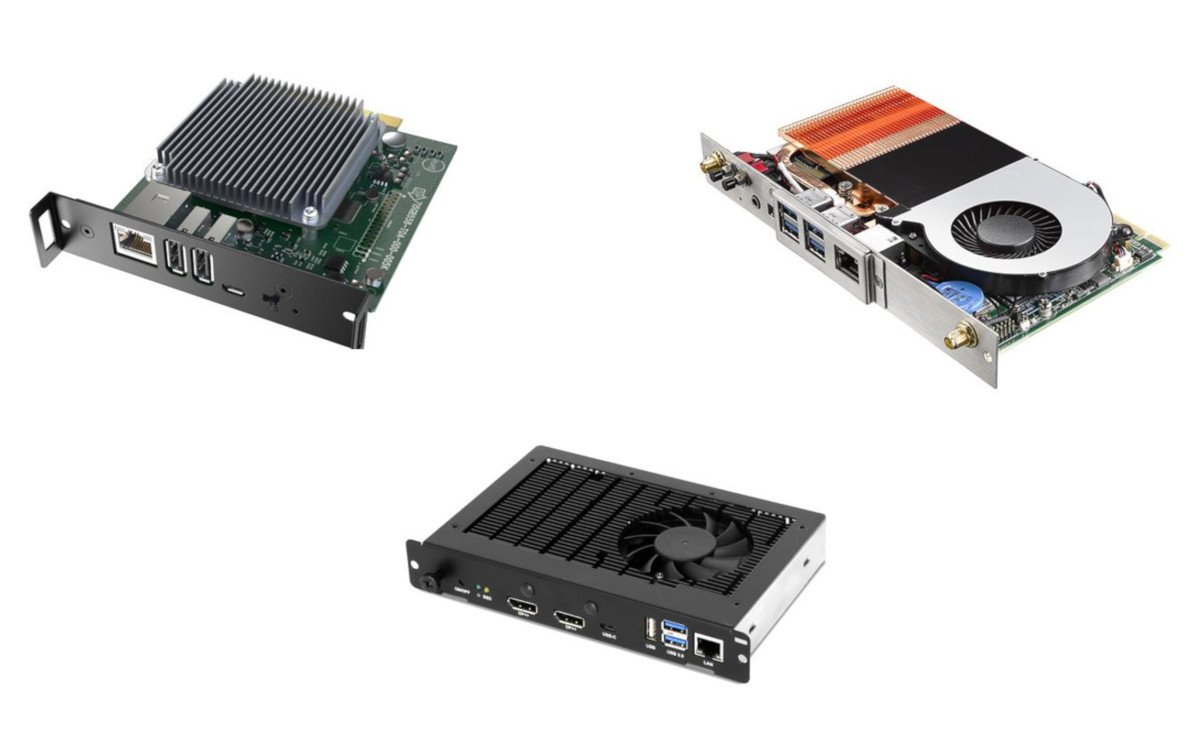More than two thirds of all digital signage systems are simple digital poster installations. High-performance computing power is usually not required, so professional displays with integrated media players are often the first choice. While Samsung, LG and Philips build on SoC, Sharp/NEC prefers a modular solution. An Invidis look behind the scenes.
Nowadays, virtually every professional display has system-on-chip (SoC) based media player functionality integrated. For standard digital signage applications, SoC platforms like Tizen, WebOS or Android-based systems are fully sufficient. They primarily differ in the ecosystem, i.e. the number of compatible digital signage software solutions that have been adapted for the respective platform.
Most content management systems (CMS) for digital signage are adopted for Samsung Tizen and Android – although not all CMS run on all Android versions. WebOS, on the other hand, although an industry-praised operating system, lags a bit behind and counts less third-party CMS adoptions.

Besides the option of installing third-party content management systems (CMS), Samsung, LG, Philips and the like also offer their own CMSs that are specifically adapted to their SoC platform. Samsung, for example, offers with MagicInfo the most advanced in-house content management software almost on level with ISV-solutions like Scala or Grassfish. Of course, Samsung MagicInfo runs only on the in-house Tizen platform.
Display provider Sharp/NEC, on the other hand, sets itself apart from the competition and pursues a different strategy. Instead of proprietary platforms, the Japanese display vendor follows a system-agnostic approach. One example: No other display provider supports as much different computing hardware as Sharp/NEC. Sharp/NEC is not only ahead in the market with the OPS slot developed by processor manufacturer Intel. The much smaller and more power-saving OPS successor SDM is also already available in the first displays from Sharp/NEC.
It doesn’t always have to be Intel
However, the high-performance Intel slots are not a real SoC alternative, but they are an ideal integrated computing solution when an SoC reaches its limits. That’s why Sharp/NEC developed its own Open Modular Platform. The computing platform allows the integration of CMS partners, independent of the hardware used. This means that not only Intel-based systems can be used, but also the powerful 4th generation RaspberryPI. This is a real alternative to the competitor’s build-in SoC. The NEC 4th Gen RaspberryPi is more advanced than standard RaspberryPi offering additional USB, LAN ports, 32GB internal memory and WiFi. In contrast to fixed SoC solutions, all NEC players are modular and can even be set up (software deplyoment) separately from the display by the integrator in advance
NEC’s Open Modular Platform is based on the single code-base technology of SignageOS and supports a wide range of established CMS solutions. Many additional well-known digital signage software providers are already planning to offer their solutions on the independent platform as well. The features are numerous: via the hub function integrated in the NEC RaspberryPi MediaPlayer, users can, for example, select the desired CMS with the remote control directly after unpacking the display and install the CMS immediately. According to Sharp/NEC, additional functions, sensors and IoT features, such as those from Nexmosphere, can also be easily integrated.
Nils Karsten, responsible for the partner strategy at Sharp/NEC, points out the benefits of a modular solutions. Speaking to invidis, the long-time digital signage expert is convinced that the Sharp/NEC is the most flexible platform available. As the platform can easily be adapted to customer needs, it not only keeps up with other permanently integrated SoC solutions on the market, but it surpasses them in project reality: Not only does Sharp/NEC enable its customers to make specific adaptations, the platform offers all parties involved full control over the system, the servers and the operating system – security issues that play an important role, especially for blue chip customers.


